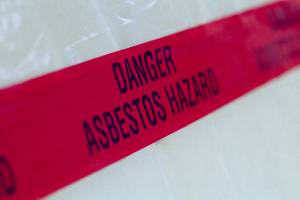Blog
Avoiding Asbestos Exposure When Working in Old Buildings
Posted on behalf of Peter T. Nicholl in Mesothelioma & Asbestos Published on April 30, 2021 and updated on March 15, 2022. Many buildings constructed before the 1980s contained asbestos. This dangerous mineral was often used in insulation, roof tiles, ceiling tiles, floor tiles, paint and other materials.
Many buildings constructed before the 1980s contained asbestos. This dangerous mineral was often used in insulation, roof tiles, ceiling tiles, floor tiles, paint and other materials.
It is even possible to encounter asbestos-containing products/materials in buildings constructed in the 1980s. Asbestos was never officially banned, although widespread use of this mineral tapered off and stopped in the 1970s and early 1980s. There are still millions of buildings that may contain some amount of asbestos.
Employers who run businesses out of older buildings need to be careful about protecting their workers from asbestos. Employees should also watch for signs of asbestos and report them immediately to help protect themselves and their coworkers.
If you currently work, or used to work, in an older building and have been exposed to asbestos, your employer may have liability for damages you may suffer. It may depend on what your employer did or did not do to remove asbestos or protect workers from it.
Below, learn more about what employers should do to protect workers from asbestos, along with what workers should know so they can have a chance of spotting asbestos-containing materials.
Steps Employers Should Take to Protect Workers from Asbestos
Employers have a tremendous responsibility for taking reasonable steps to keep their workers safe. If they have reason to suspect the building may contain asbestos, they should get it tested. Qualified professionals can determine where asbestos may be present and the risks to occupants.
Some asbestos-containing materials are riskier than others. For example, non-friable floor tiles are much less risky than friable spray-on insulation or friable pipe insulation. Inspectors can assess these risks and provide a report to the employer so they can decide what to do next.
In the short-term, it may be OK to simply cordon off an area with asbestos, so employees and others do not disturb the asbestos. However, this is not a solution. Eventually, renovations and other activities could cause asbestos fibers to be disturbed and get into the air. Employers may be legally required to remove asbestos if there are going to be renovations or other activities that could cause asbestos to be disturbed.
Employers may also need to distribute personal protective equipment to protect workers if they may be exposed to asbestos, such as if they are involved in asbestos removal or abatement.
Employers should make sure to keep their employees informed about the risk of asbestos exposure. If they do not, they could be exposing themselves to liability if employees later develop mesothelioma or other asbestos-related health problems.
The defense that the employer did not know is very unlikely to work. The risks of asbestos exposure are widely known. If an employer chooses to operate out of an old building, they have a responsibility to assess the risks of asbestos exposure and protect their employees.
Reducing Your Risk of Asbestos Exposure
Sometimes you may not know you have been exposed to asbestos. However, if you know what building materials used to contain asbestos, and how asbestos fibers may become airborne, you may have a better chance of protecting yourself.
For example, some types of paint used to contain asbestos. Roofing tiles, ceiling tiles, insulation, steam pipes, fireproofing, electrical components and duct connectors all used to contain asbestos. If a building has not been renovated in a long time, some of these materials may still be present. Over time, they can break down and fibers could easily be released into the air.
Once you spot something that concerns you, you can inform your employer and the area can be roped off to prevent asbestos from being disturbed. Once asbestos is disturbed, fibers could remain in the air for days. Whenever possible, avoid the area where asbestos might be. Tell your coworkers as well.
You may want to shower immediately when you get home from work and remove clothing and shoes outside your home before entering.
If your employer is planning renovations, check with your supervisor about what they are doing to protect workers from asbestos exposure. Have they tested the building for asbestos? Are they prepared to take steps to protect workers if asbestos is discovered?
If you used to work in an older building and you have reason to believe your employer did not take steps to protect workers, you may have grounds for a claim if you develop an asbestos-related disease.
Were You Exposed to Asbestos Through Employer Negligence? Call Today
The Law Offices of Peter T. Nicholl has been helping asbestos victims secure compensation for decades. Our Maryland-based mesothelioma lawyers have obtained compensation from some of the largest corporate employers in the nation.
There are no upfront fees for our services and the initial consultation is free. If we validate your claim and you hire us to represent you, we will not get paid unless you get paid.
Millions Recovered. No Upfront Fees. Call 410-907-3957.

